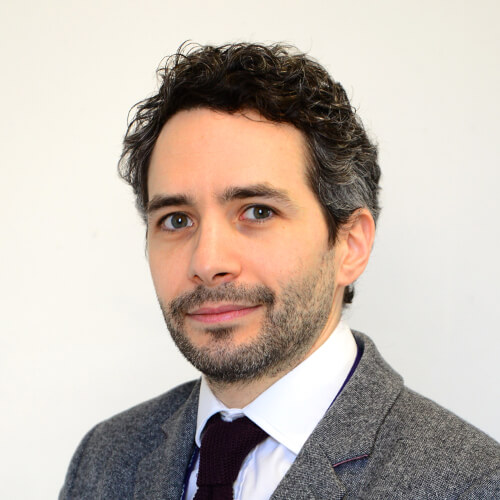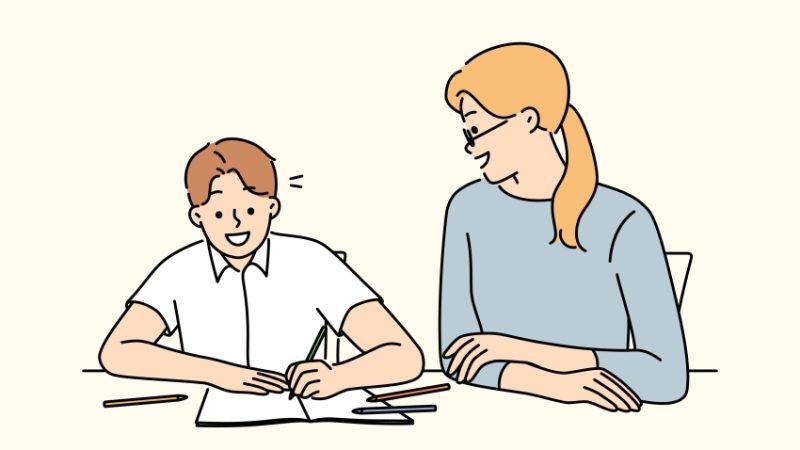What’s the Real Cost of Cutting Key Stage 3?

Allowing more time to study increasingly demanding GCSE courses seems to make sense, says Andy Lewis – but we have to think about what we could be losing…

- by Andy Lewis

In September 2015, OFSTED released its report into Key Stage 3 entitled, The wasted years? which made it clear that in many schools “Key Stage 3 is not a high priority”.
The report was released just as the exam reforms were taking place, introducing programmes of study with more content and more rigour. Naturally, the solution for many schools was to reduce Key Stage 3 to just two years, giving an extra year to cover all the additional GCSE content.
The old GCSE in Religious Studies could be squeezed into an hour a week, which enabled schools to fulfil their statutory duty for Key Stage 4 RE provision, as well as provide an additional qualification.
However the new courses demand the full 120 hours.
There have been many solutions suggested for this, including an hour a week over three years, or running the course from Year 8 to 10; one radical solution recently shared on social media indicated a GCSE course beginning in Year 7 to be completed in Year 9 for more able students.
Limited options
In economics, the term ‘opportunity cost’ means the loss of other alternatives when one alternative is chosen. For me, this is an important consideration to bear in mind when considering what is lost when a three-year Key Stage 4 is followed.
The reality is that the arts curriculum has already been affected. Many students have lost a whole year of art, music, drama and DT; a reduction from three to two years is 33% of their total secondary teaching.
Fewer students are already picking these subjects as their options have been reduced, and in some schools they now have even less time to decide if these are courses of study they want to pursue.
It would be sensationalist to claim this will have a long term impact on the arts in this country… but it can’t help.
With a three-year KS4, some students may only learn languages for their first two years in secondary. Their history and geography education may be similarly limited. Across the curriculum, a third of the content that we once believed to be essential has been cut.
And most worryingly, perhaps, by cutting KS3, there is a danger that the most disadvantaged students who join our education system will not be given access to a curriculum that helps them achieve their full potential.
Careful consideration
If schools have opted for a three-year GCSE, it is important that teachers are not simply just ‘taking their time’ with delivery. 50% more time also means students need to retain information for 50% longer – there’s a long time between the start of Year 9 and the summer of Year 11.
The data on comparing two-year and three-year GCSE results seems inconclusive at present, as does Year 10 entry versus Year 11. When it starts to emerge, will decisions be made by schools on what is best for the students, or the performance indicators and league tables?
It is for all these reasons that I welcome the Ofsted focus on curriculum. I think it’s important schools have carefully considered what their curriculum offer is, and why. After all, it would be such a shame to wonder in years to come how we ended up with a five-year GCSE… and no distinct Key Stage 3 at all.
So, what might a two- or three-year KS3 look like in action? We spoke to two head teachers, one from each side of the debate; and both absolutely confident in their broad and rich curriculum offer…
Making it work: The three-year KS3
“If we could, we would probably do fewer GCSEs, too”
“What can Thomas More’s Utopia teach us about how to live a good life today?’
‘Can maths stop the building of a concrete factory on the Olympic park?’
‘Why did Brexit happen?’
These are questions children have explored at School 21 – a 4-18 school in Stratford, East London – in Year 9.
In each case the curriculum wrapped itself around the driving question, allowing students to explore concepts and acquire knowledge outside the realms of traditional subject parameters.
And in the case of the maths project, it led to a real-world application – our learners helped ensure the concrete factory never got past planning.
There’s more: playing in a band, performing a five-minute no notes ‘ignite’ speech on a topic of their choice, being part of a whole school concert, producing sculptures, taking part in a dance project – these are universal Key Stage 3 experiences for our students.
Neither the questions nor the experiences feature on any of the GCSE courses we offer; all of them are part of our vision for a broad and big education, and GCSE specifications do not map neatly onto this vision.
Why not? Well firstly, they have extraordinary power to draw energy and time into their orbit.
‘Why are you not referring to AO3 in your lesson?’ ‘The behaviour is not great in my Year 8 class but I need to focus on my Year 11s.’ ‘What grade do you predict Jane in Year 7 English will get by GCSE?’
Starting the GCSEs earlier heightens the chances of mission creep, and reduces the chances of creating intellectual space for a broad education.
Secondly, GCSEs are not the goal of education. They are one measure of how well children have understood selected parts of certain subjects. They should be given just enough space and time to ensure students can secure the grades they need for their next steps.
Thirdly, by choosing options in Year 8 and starting courses in Year 9 children are missing out on brilliant subjects – often those that spark creative thought.
If students drop music or drama or DT they may never experience their joy again – all in service of securing a few more marks on terminal exams.
So for us the decision was easy. Two years is better than three if we are to fulfil our broader goals. In fact if we could, we would probably do fewer GCSEs in Year 10 and 11 too.
 Oli de Botton is co-founder and head teacher of School 21, a 4 to 18 school in Stratford, East London, where Key Stage 3 lasts for three years.
Oli de Botton is co-founder and head teacher of School 21, a 4 to 18 school in Stratford, East London, where Key Stage 3 lasts for three years.
Making it work: The two-year KS3
“What’s better than spending all day focusing on what you love?
Back in September 2014, we took the brave step of radically overhauling our curriculum at Burnt Mill Academy, in Harlow. For the first time, students as young as 13 would be achieving GCSEs.
A new structure saw lessons extended from 60 minutes to 100 minutes to make it possible to achieve a GCSE in one year. We know our students well as a result and are able to meet their needs; we can get through a lot more content and go into topics much deeper.
This means Year 9 and 10 students achieve two GCSE qualifications each year, freeing up their time and energy to tackle their core subjects in Year 11, significantly lightening the load.
Not only that, but our curriculum recognises the importance the arts have for young people, giving them the cultural capital our disadvantaged students might otherwise lack.
We want our students to study very traditional subjects, such as history and modern foreign languages, but not at the expense of art or dance, for example.
Our curriculum allows our students to continue to have a very rich curriculum at Key Stage 4 and to compete for places at all the top universities, both nationally and internationally.
Traditionally, children take their options in Year 9 and they are set in stone. That can mean being stuck with options they chose at the age of 13 when they are 16, even if their plans for the future have changed.
Our students get to make their choices each year for the year ahead, so they stay relevant as they grow older. For two days each week, they only have their options lessons; what better as a child than spending all day focusing on what you love?
The children absolutely love it and, as a teacher, the 100-minute lessons mean you can really get stuck in to a topic and have the time to make sure every single child is making progress – if not, you have the time to intervene.
At Forest Hall, a small school with just over 500 students, we have been able to offer more than 20 subjects as a result of this change. We are offering a really thorough curriculum, with real breadth of choice – we would not have that without this structure.
A lot of hard work went into planning our curriculum and we know our students thrive as a result of it. We are seeing students in Year 9 securing top grades, so our curriculum is allowing them to fulfil their full potential. It gives them real confidence going forward and into Year 11 where they take their core subjects.
Helena Mills CBE, is CEO of BMAT multi-academy trust, which operates a two-year Key Stage three at its secondary schools in Essex and London.
Andy Lewis is an assistant headteacher and director of RE at St Bonaventure’s in East London. He is a textbook writer, blogger and can be found on Twitter as @AndyLewis_RE.











